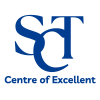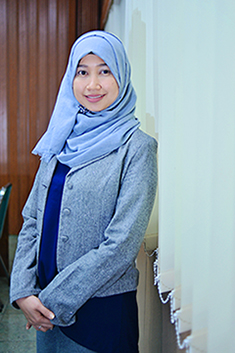Design and Optimization of Nanostructured Lipid Carriers for Quercetin in Skin Lightening Applications
Downloads
Background: Quercetin, a potential skin-lightening agent, reduces intracellular and fungal tyrosinase activities. However, its poor water solubility and limited skin permeability hinder its applications. Nanostructured lipid carriers (NLCs), which are composed of biocompatible and biodegradable lipids, enhance drug stability and skin penetration. The lipid type, surfactant concentration, and formulation parameters influence NLC stability. Objective: This study aimed to optimize NLC formulations for quercetin delivery by evaluating their organoleptic properties, particle size, polydispersity index (PDI), and pH. Methods: NLCs were prepared using 10% total lipids (4% solid and 6% liquid lipids) and surfactant mixtures at varying concentrations via High Shear Homogenization. Initial formulations using myristic acid and castor oil were unstable and underwent phase separation within five days. Results: Substituting the solid lipid with a 1:3 combination of beeswax and cocoa butter produced a stable formulation during storage at room temperature. The lipid and surfactant compositions significantly influenced the particle size and PDI. While the pH remained stable, statistical analysis revealed significant changes in particle size and PDI across the formulations. Conclusion: Optimized NLC formulations for quercetin delivery demonstrated improved stability and potential for effective skin lightening. Further research is warranted to evaluate the in vivo efficacy and scalability of this approach.
Choi, M. H. & Shin, H. J. (2016). Anti-Melanogenesiseffect of Quercetin. Cosmetics; 3; 1–16. doi: 10.3390/cosmetics3020018
Da Silva, T. L. T. & Martini, S. (2024). Recent Advances in Lipid Crystallization in the Food Industry. Annual Review of Food Science and Technology; 15; 355–379. doi: 10.1146/annurev-food-072023-034403
Dragicevic, N. & Maibach, H. I. (2016). Percutaneous Penetration Enhancers Chemical Methods in Penetration Enhancement: Nanocarriers. Berlin: Springer Nature.
Dyah, R., Widji, S. & Noorma, R. (2023). Characterization and Penetration Profile of Resveratrol-loaded Nanostructured Lipid Carrier (NLC) for Topical Anti-aging. Key Engineering Materials; 942; 65–70. doi: 10.4028/p-558sg4.
Fitriani, E. W., Avanti, C., Rosana, Y. & Surini, S. (2024). Nanostructured Lipid Carriers: A Prospective Dermal Drug Delivery System for Natural Active Ingredients. Pharmacia; 71; 1–15. doi: 10.3897/pharmacia.71.e115849.
Han, F., Li, S., Yin, R., Liu, H. & Xu, L. (2008). Effect of Surfactants on The Formation and Characterization of a New Type of colloidal Drug Delivery System: Nanostructured Lipid Carriers. Colloids and Surfaces A: Physicochemical and Engineering Aspects; 315; 210–216. doi: 10.1016/j.colsurfa.2007.08.005.
Hatahet, T., Morille, M., Hommoss, A., Devoisselle, J. M., Müller, R. H. & Bégu, S. (2016). Quercetin Topical Application, From Conventional Dosage Forms to Nanodosage Forms. European Journal of Pharmaceutics and Biopharmaceutics; 108; 41–53. doi: 10.1016/j.ejpb.2016.08.011.
Helmidanora, R., Jubaidah, S. & Fauziah A. A., I. (2023). Formulasi Film Forming Spray Dari Kloramfenikol Untuk Luka. Jurnal Ilmiah Ibnu Sina (JIIS): Ilmu Farmasi Dan Kesehatan; 8; 327–337. doi: 10.36387/jiis.v8i2.1517.
Husnawiyah, N., Nugroho, W. & Widyaningrum, I. (2023). Pengaruh Jenis Lipid Padat Terhadap Sifat Fisika Dan Kimia Pada Sistem Penghantar Obat Nanostructired Lipid Carriers (NLC). Bio Komplementer Medicine; 10; 1–7.
Juanita, G. & Aryani, N. L. D. (2023). Scale Up Nanostructured Lipid Carrier (NLC) Koenzim Q10 Menggunakan Matriks Lipid Asam Stearat-Isopropil Palmitat. Jurnal Ners; 7; 908–916. doi: 10.31004/jn.v7i2.16287.
Khasanah, U. & Rochman, M. F. (2022). Stabilitas Nanostructured Lipid Carrier Coenzyme Q10 Dengan Variasi Waktu Pengadukan. Jurnal Ilmu Farmasi Dan Farmasi Klinik; 18; 55. doi: 10.31942/jiffk.v18i2.5958.
Lu, B., Huang, Y., Chen, Z., Ye, J., Xu, H., Chen, W. & Long, X. (2019). Niosomal Nanocarriers for Enhanced Skin Delivery of Quercetin With Functions of Anti-Tyrosinase and Antioxidant. Molecules; 24; 1-17. doi: 10.3390/molecules24122322.
Mayangsari, F. D., Erawati, T., Soeratri, W. & Rosita, N. (2021). Karakteristik dan Stabilitas Fisik NLC-Koenzim Q10 dalam Sleeping Mask dengan Minyak Nilam. Jurnal Farmasi Dan Ilmu Kefarmasian Indonesia; 8; 178. doi: 10.20473/jfiki.v8i22021.178-186.
Mukhlishah, N. R. I. & Ningrum, D. M. (2019). Uji Sifat Fisik dan Iritasi Ekstrak Etanol Buah Rukem (Flacourtia rukam) dalam Sediaan Sunscreen Basis Gel. Pharmaceutical and Traditional Medicine; 3; 56–61.
Müller, M. & Careglio, E. (2018). Influence of Free Fatty Acids as Additives on the Crystallization Kinetics of Cocoa Butter. Journal of Food Research; 7; 86. doi: 10.5539/jfr.v7n5p86.
Munandar Erawati, T., Rosita, N. & Rachmania, I. (2023). The Activity of Candlenut Oil in The Nanostructured Lipid Carrier System on Hair Growth in Rats. Journal of Public Health in Africa; 14; 118–122. doi: 10.4081/jphia.2023.2519.
Rahmi, D., Yunilawati, R. & Ratnawati, E. (2013). Peningkatan Stabilitas Emulsi Krim Nanopartikel Untuk Mempertahankan Kelembaban Kulit. Jurnal Kimia Dan Kemasan; 35; 30. doi: 10.24817/jkk.v35i1.1870.
Rohmah, M., Raharjo, S., Hidayat, C. & Martien, R. (2019). Formulasi dan Stabilitas Nanostructured Lipid Carrier dari Campuran Fraksi Stearin dan Olein Minyak Kelapa Sawit. Jurnal Aplikasi Teknologi Pangan; 8; 23–30. doi: 10.17728/jatp.3722.
Sakellari, G. I., Zafeiri, I., Batchelor, H. & Spyropoulos, F. (2021). Formulation Design, Production and Characterisation of Solid Lipid Nanoparticles (SLN) and Nanostructured Lipid Carriers (NLC) For The Encapsulation of A Model Hydrophobic Active. Food Hydrocolloids for Health; 1; 1-18. doi: 10.1016/j.fhfh.2021.100024.
Smejkal, G., Gross, V., & Lazarev, A. (2024). Theoretical and Experimental Determinations of the Hydrophilic–Lipophilic Balance (HLB) of Representative Oils and Lecithins. Colloids and Interfaces; 8; 1-13. doi: 10.3390/colloids8020021.
Copyright (c) 2025 JURNAL FARMASI DAN ILMU KEFARMASIAN INDONESIA

This work is licensed under a Creative Commons Attribution-NonCommercial-ShareAlike 4.0 International License.
1. The copyright of this journal belongs to the Editorial Board and Journal Manager with the author's knowledge, while the moral right of the publication belong to the author.
2. The formal legal aspect of journal publication accessibility refers to the Creative Commons Attribution-Non-Commercial-Share Alike (CC BY-NC-SA), which implies that the publication can be used for non-commercial purposes in its original form.
3. Every publication (print/electronic) is open access for educational, research, and library purposes. In addition to the objectives mentioned above, the editorial board is not responsible for copyright infringement


.jpg)















